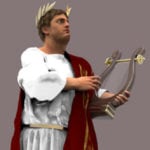 History
History  History
History  Technology
Technology Top 10 Everyday Tech Buzzwords That Hide a Darker Past
 Humans
Humans 10 Everyday Human Behaviors That Are Actually Survival Instincts
 Animals
Animals 10 Animals That Humiliated and Harmed Historical Leaders
 History
History 10 Most Influential Protests in Modern History
 Creepy
Creepy 10 More Representations of Death from Myth, Legend, and Folktale
 Technology
Technology 10 Scientific Breakthroughs of 2025 That’ll Change Everything
 Our World
Our World 10 Ways Icelandic Culture Makes Other Countries Look Boring
 Misconceptions
Misconceptions 10 Common Misconceptions About the Victorian Era
 Mysteries
Mysteries 10 Strange Unexplained Mysteries of 2025
 History
History 10 Things You Didn’t Know About the American National Anthem
 Technology
Technology Top 10 Everyday Tech Buzzwords That Hide a Darker Past
 Humans
Humans 10 Everyday Human Behaviors That Are Actually Survival Instincts
Who's Behind Listverse?

Jamie Frater
Head Editor
Jamie founded Listverse due to an insatiable desire to share fascinating, obscure, and bizarre facts. He has been a guest speaker on numerous national radio and television stations and is a five time published author.
More About Us Animals
Animals 10 Animals That Humiliated and Harmed Historical Leaders
 History
History 10 Most Influential Protests in Modern History
 Creepy
Creepy 10 More Representations of Death from Myth, Legend, and Folktale
 Technology
Technology 10 Scientific Breakthroughs of 2025 That’ll Change Everything
 Our World
Our World 10 Ways Icelandic Culture Makes Other Countries Look Boring
 Misconceptions
Misconceptions 10 Common Misconceptions About the Victorian Era
 Mysteries
Mysteries 10 Strange Unexplained Mysteries of 2025
10 More Intense Three-Way Rivalries
Owing to the enduring need to write supplemental lists (a need that rises out of great user comments and ever-abundant research material) I have decided to write a follow up to a previous list of mine, the Top Ten Intense Three-way Rivalries from November 16, 2010. This is 10 MORE Three-Way Rivalries.
As you can guess, I find three-way rivalries to be quite fascinating, and a lot more than just 50% more complex than the standard two-sided ones. Also, having a theme like this is a good excuse to discuss a wider range of topics that might not otherwise be related: a better chance for everyone to learn something new. I’ve also snuck some personal reading recommendations in here. So I hope you enjoy my latest selections which incorporate past suggestions, explore new territory and round-out the collection at an even twenty.
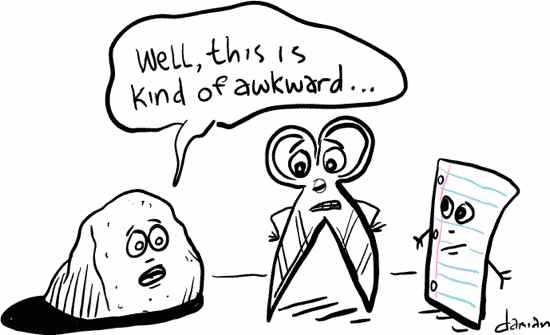
You’ve played it, but do you know the origin? Well, according to the World Rock Paper Scissors Society, the earliest probable occurrence of the game was in Japan, circa 200 BC. The game then somehow migrated to Europe and then to America, by way of Jean-Baptiste Donatien de Vimeur, comte de Rochambea, who commanded the French Expeditionary Force in the American Revolutionary War. In fact, if you were so inclined, you could call the game “Roshambo,” as it is thus alternatively known.
Other variants of the game exist, including a version (also from Japan) that includes a chief, a tiger and the chief’s mother. The chief beats the tiger, the tiger beats the chief’s mother, and, naturally, the chief’s mother beats the chief. I couldn’t find the hand signals for that one. Incidentally, if you want to know how to always win rock paper scissors, go here.
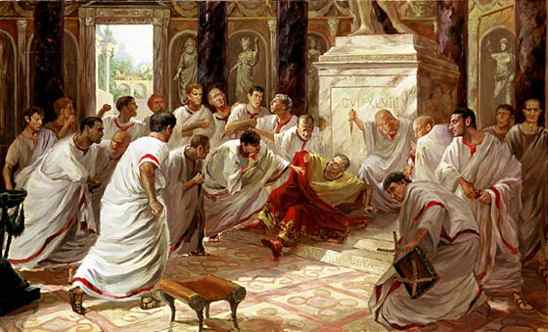
What political shift in all of history was more momentous than the transformation of Rome from a republic to an empire? At its core, roughly 44 BC – 30 BC, there was a three-way super-rivalry: Octavius, Marcus Aemilius Lepidus and Mark Antony
The story of the Second Roman Triumvirate has it all: Conspiracy (the assassination of Julius Caesar), an alliance (the Brundisium Treaty), spiteful convictions (Quintus Tullius Cicero, among others), unceasing power grabs (Sextus Pompeius among others), marriage (Antony and Octavian’s sister Octavia), romance (Antony and Cleopatra), the end of one dynasty (Cleopatra and the pharaohs) and the dawn of another (Augustus, Caesar of Rome).
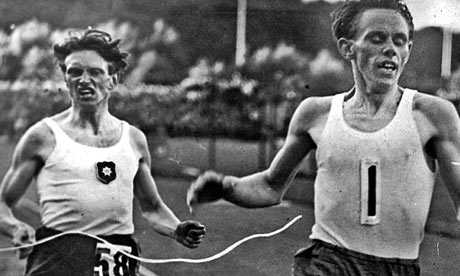
In the early 1940’s there existed a running rivalry between two Swedish athletes, Arne Andersson and Gunder Hägg (above), who, pushing each other gradually, and pushing the human limits, would push the world record mile time to 4 minutes and 1.3 seconds. Breaking the 4-minute mark would be prove something too difficult for either to achieve. That feat would require a three-way rivalry a decade later.
Enter Roger Bannister, a self-taught (at running) Oxford medical student; John Landy, an Australian who had built endurance as a child by chasing butterflies for his collection; and Wes Santee, an abused American boy from a Kansas farm. The mission was self evident and mutually exclusive: to be the first person ever to run a mile (1,609 meters) in under 4 minutes. The winner was Bannister, who earned immortality on May 6, 1954, in Oxford, where a plaque still hangs in his honor. His time (3:59.4) would be broken a month later by Landy (3:57.9). Bannister was first, however, and Bannister would defeat Landy in a head-to-head, double sub-four race the following August, in Vancouver. In 1955, Santee ran his personal best-ever time at 4:00.5.
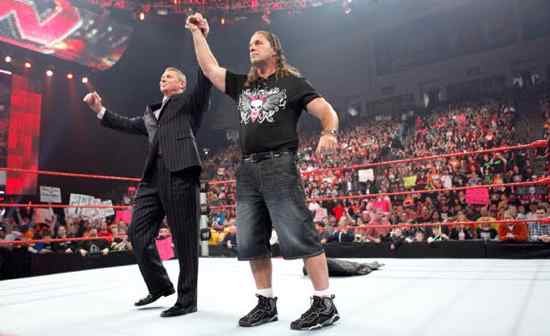
Professional wrestling is built on the idea of a rivalry. Fighters and bookers spend months building up “heat” and fans pay to see the dramatic climax. Sometimes, though, the lines between show and reality become blurred and no time is a better example than in the WWF, in 1997. That year, a feud had been established between Bret “The Hitman” Hart and “Stone Cold” Steve Austin. Their submission match, at WrestleMania 13, is considered to be one of the best of all-time, and it wasn’t even a title match or the main event that night (it did win Match-of-the-Year and remains an extremely rare example of the “double-turn” in wrestling jargon.)
Also in 1997, and this is where it gets thorny, Vince McMahon found his WWF brand struggling against up-and-coming competitor, WCW. The WCW had been raiding the WWF for talent and had made on offer to Hart, who had by early fall begun his fifth reign as WWF champion . After a sordid sequence of events involving spying, lying and lawsuits, the decision was made that Bret and the WWF had to part ways. To make a long story short (it would take chapters to do it justice, but if you’re interested try Bret Hart’s autobiography “Hitman”), on November 9, 1997, Bret was screwed out of the WWF title and out of his WWF career (real-life screwed, not just storyline screwed) in a notorious event known as The Montreal Screwjob.
The double-crossing is also what created the McMahon’s heel charicature, a rivalry with whom Steve Austin would work, taking WWF to new heights and essentially crushing WCW, by 1999. It took years, during which Bret’s younger brother Owen was killed at a WWF event, but Bret Hart eventually forgave Vince and returned to a role in the WWF. In a nice twist, Steve Austin acted as Master of Ceremonies at Bret Hart’s induction into the Professional Wrestling Hall of Fame.
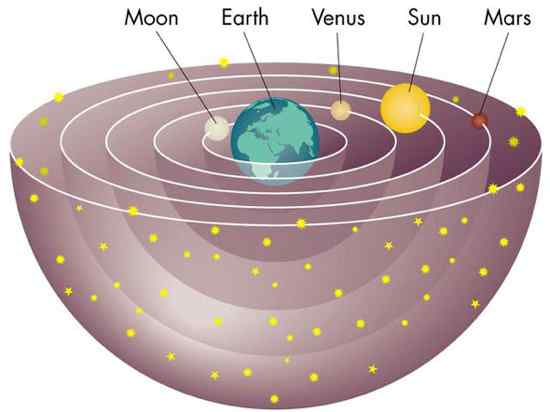
My original list contained an entry about the Miss Universe pageant, but before we could get to that luxury we first needed to decide on an actual model for our universe. In the late sixteenth century there were three clear contenders. The first was by the great librarian, Ptolemy, who had the Earth at the center, surrounded by the moon, the sun, and the stars. This “geocentric” view represented all of ancient philosophy, and prevailed as the status quo well through the middle ages.
The second was by Copernicus, who, as his last act before death in 1543, authorized his “heliocentric” model, which had the sun at the center surrounded by the revolving Earth and other planets. A short time later, a third model was offered by the Danish astronomer Tycho Brahe, who had the earth fixed at the center again, with the sun revolving around it, but this time with the planets and stars orbiting around the sun. It was sort of a mix between the previous two, and he, impressively, included the path of a comet. (There were no serious theories that had the moon not rotating around the Earth. That was apparent.) Each of these theories had its practical arguments for and against, and its stringent supporters. Well with Galileo’s newly fashioned telescope, and with a little help from Kepler to work out the kinks in the math, the Copernican model was settled on, but not before a few burnings at the stake.
Now, we all might think we’re smart for knowing what they didn’t, that the Earth travels around the sun. Remember, though, another scientist named Albert Einstein would come along with a theory that all motion is relative to any individual point of reference, which, in a way, would bring the center of the universe right back to the Earth, where we started.
Bizarre tangent: Tycho Brahe died of a ruptured bladder after failing to receive permission to excuse himself from a courtly dinner.
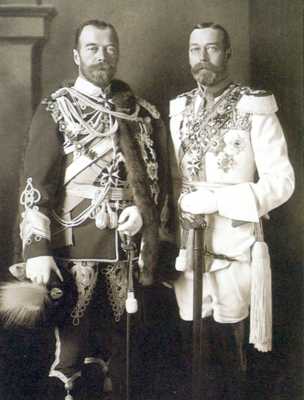
Without getting bogged down in a weighty discussion on the causes of the first world war, let’s focus solely on the peculiar fact that three of the four biggest belligerents in that horrible episode were lead by three men who had the same grandmother. They were Kaiser Wilhelm II of the German Empire, Czar Nicholas II of the Russian Empire and King George V of the United Kingdom. Here’s how it went: George V’s father, Edward VII, was the brother of the Kaiser’s mother. The Czar (which is Russian for Caesar, as is Kaiser in German), despite having an uncanny resemblance to George V in portraits, was only the King’s (and the Kaiser’s) cousin through marriage, a fact that is true twice: his mother was the sister of Edward VII’s wife (also the Queen of Denmark) and his own wife, Czarina Alix, was Edward VII’s niece.
Britain had joined France and Russia in a Triple Entente, but this hardly meant that they were true allies, obligated to assist in a continental war. The British would do exactly that, but in the precarious years, and even days, leading up to the outbreak, it is was nowhere near a given. After all, the ties between Britain and Germany were real. Queen Victoria (their grandmother) preferred Germany over France, and the Kaiser not only attended Edward VII’s funeral, dressed in British military regalia, but also held the late King’s widow’s (the Kaiser’s aunt’s) hand. As for Wilhelm and Nicholas, consider this heartbreaking piece of trivia: when they were corresponding with each other, in July, 1914, in a doomed search for a way out of war, the two great emperors actually referred to each other as “Willy” and “Nicky.” The political situation among nations had reached critical mass, yet the kinship between the two cousins still had a tender side to it. The darker side would follow.
For a detailed account of the events leading up to “The Great War,” allow me to strongly recommend The Guns of August, by Barbara Tuchman. It won the Pulitzer Prize (in my opinion for the first chapter alone), and was made required reading, by President John F. Kennedy, for all his cabinet during the Cuban Crisis of 1962. The Tsar and his cousin, the Kaiser, are pictured above.

These are the media conglomerates that control much of what we get as information and entertainment. They are not the only conglomerates (others include Viacom and NBC Universal) but they are the three biggest. And they are massive. The Walt Disney Company, for example, owns and operates the American Broadcasting Company (ABC), several movie studios, including Pixar Animation Studios, and a plethora of cable/satellite channels including The Disney Channel, The History Channel, Lifetime, the entire ESPN family of networks and ESPN, the Magazine. And Marvel Comics. This is in addition to its famous parks and resorts, and a cruise line.
News Corp boasts as its assets the following: 20th Century Fox, Fox Television Studios, Fox News Channel, Fox Sports, The Sun and The Times, The New York Post, The Wall Street Journal, and numerous other endeavors including National Geographic and MySpace. Time Warner (formerly Time Warner AOL) is known primarily for its two merged namesakes; Warner Bros. and Time Inc, the publisher of Time, Fortune, People, Sports Illustrated, Entertainment Weekly, and over 100 other magazines. Their holdings also include yet another blitz of cable/satellite channels including HBO, CNN, TBS and Cartoon Network.
There also exists, it should be noted, virtually countless possibilities of three-way rivalries existing within this complex. Such as: Bugs Bunny/Daffy Duck/Elmer Fudd from Looney Tunes (Warner), or Batman/Joker/Catwoman from DC Comics (Warner again), or even Humans/Elves/Dwarfs from the Lord of the Rings film trilogy (distributed by New Line Cinema, a subsidiary of Warner.)

This might seem like an odd pick to make the top 3, just because of how deliciously well they go together. Historically parallel, all three were “discovered” by the Spanish during their conquest of Aztec Mexico. They were also, and by an insurmountable margin, the most popular milkshake flavors of the classic hamburger diners deemed by this writer to be of great cultural value, nearly attaining relic status. Maybe I’m just a sucker for the nostalgic, and a cynic, but I’m always mildly shocked when new “old-fashioned”-themed restaurants even serve a milkshake in an actual “glass” glass, and even more so when they give you two straws without asking.
They’re also the three flavors of high-protein muscle drinks used by weightlifters and bodybuilders, so I suppose the milkshake legacy lives on in that new form. The trio is also quasi-analogous to a rivalry featured on my original list: Blondes, Brunettes and Redheads, but that might be stretching it.
What it boils down to is simply this: With all three flavors so perfectly unique, and uniquely divine, and all three vying for your predilection, which one do you chose? Which bite of Neapolitan ice cream do you eat first? Which bite do you save for last? Decisions, decisions, decisions.
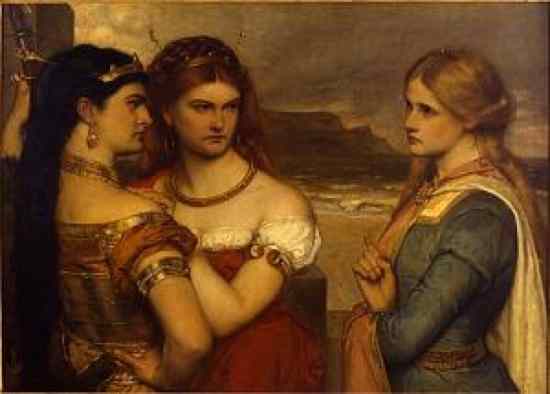
This rivalry is legendary for many reasons, the most obvious of which is that it’s the most common and severe type of rivalry: the sibling rivalry. It’s certainly the best example of one in Shakespeare, and arguably in all of English lit.
In King Lear, the old king asks each of his three daughters, Goneril, Regan and Cordelia, to express how much they love him, in order to receive their division of the kingdom. The two eldest daughters humor him with grand elaborations of their love, but the youngest daughter (Cordelia), who loves him the most, refuses to participate in the shallow public display. The king subsequently banishes her from Britain and she marries the King of France. Goneril and Regan then conspire to affect the demise of their senile father, but are ultimately consumed with jealousy and hatred for each other. In the end, Cordelia is executed, Goneril poisons Regan (to death) and then stabs herself (to death), and Lear dies with Cordeia’s dead body in his arms. It’s the archetypal Shakespearean corpse heap.
Of course, we cannot talk Shakespeare without at least one close textual reading. So consider this passage from the fourth act between Cordelia and Lear, in which the king admits his mistake: He tells her, “If you have poison for me, I will drink it. I know you do not love me; for your sisters have, as I do remember, done me wrong: You have some cause, they have not.” Cordelia responds plainly, “No cause. No cause.”
Ron Rosenbaum, in his book The Shakespeare Wars, makes the case that this one line unlocks a certain “forgiveness as pleasure.” He even calls it the “ultimate pleasure,” stating, “Of course there is cause, but nothing he’s done is unforgivable, nothing he has done is ‘cause’ enough, is cause anymore. Forgiveness suspends the old laws of cause and effect.”
Something positive to think about, I thought.
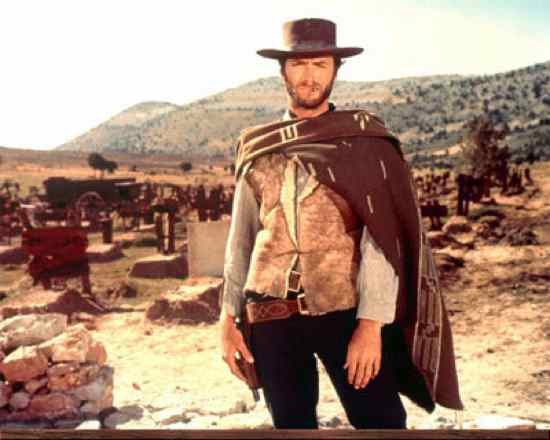
We all know the ultimate battle in life is between good and evil. But what happens when that old dynamic is warped into a three-way confrontation? Edmund Burke is often attributed with the line, “The only thing necessary for the triumph of evil is for good men to do nothing.” This might create three groups of people: the good, the evil, and the reluctant and/or complacent. But, perhaps its more fun to approach the question the way Italian film director Sergio Leone did, in his 1966 western The Good, the Bad, and the Ugly, starring Clint Eastwood (“il buono”), Lee Van Cleef (“il brutto”), and Eli Wallach (as Tuco Benedicto Pacífico Juan María Ramírez, or “il cattivo”). The story, the third in a trilogy, is about a search for lost gold, and in the final scene the three armed men face each other in an epic three-way showdown to the death, or categorically, a Mexican Standoff. No spoilers here.
This item tops the list because it is not merely a three-way rivalry, but the absolute culmination of one; it’s rivalry reached a guns-drawn apex. Also, no other three-way rivalries on this list have the added effect of an Ennio Morricone musical accompaniment. Can’t beat those horns. Quentin Tarantino (who is also noted for making use of the Mexican Standoff, and for employing Morricone scores, yet I can’t say he’s done both at the same time) called The Good, The Bad, and The Ugly “the best directed film of all-time.” And if imitation is the sincerest form of flattery, then his praise is, moreover, high indeed.








